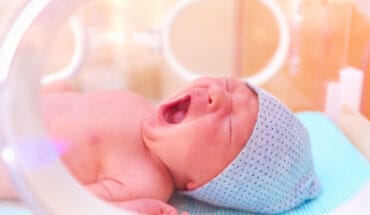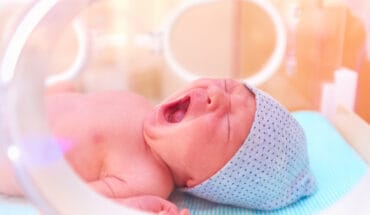Exhibitions are a great place for businesses to showcase their products to a highly relevant audience. They offer a unique opportunity to target niche audience demographics and appeal to Business-to-Business (B2B) marketers looking to generate leads and grow their business.
These events have been hugely successful. Event organisers have been trialling a new exhibition format. These exhibitions are consumer-led events, focussing on Business-to-Consumer (B2C) marketing strategies.
As with the traditional trade show, B2C exhibitions are most effective when targeting a niche audience. They allow attendees to meet and talk to specialists in that vocation, and exhibitors the chance to generate sales and increase brand awareness. Full-service exhibition stand suppliers, Quadrant2Design, have seen an increase in the interest for these events over recent years. They believe that it is due to an increased demand for industry events that require care and sensitivity, as face-to-face marketing strategies are better suited to this need.
The fertility industry has seen a massive increase in demand as more and more couples are finding themselves unable to conceive naturally. Clinics have reported a 95% increase in the number of people taking fertility tests. The NHS has put stricter restrictions on who can qualify for assisted conception. It will come as no surprise that people are seeking alternative fertility treatments.
Exhibitions are one of the only remaining marketing platforms that allow face-to-face communication and the chance to form relationships. They sit on the complete opposite end of the marketing spectrum. This makes them a fantastic tool to promote a sensitive subject (and why we say that exhibitions are bucking the digital trend).
For these reasons, fertility exhibitions have been rising in popularity over the last few years. This year, The Fertility Show will take place at Olympia, London and expects to attract upwards of 4,000. There has never been a better time or place to ask for fertility advice.
In 2013 a study by Reuters Health identified almost one in six couples are unable to get pregnant after one year of trying. This is the accepted definition of infertility. Since 1964, the global fertility rate has been in decline. In 2013, when Reuters Health undertook their study, there were 2.517 live births per woman. In 2020 that figure has dropped to 2.448, suggesting more than one in six couples are dealing with infertility today.
Over the last 50 years, there has been a substantial increase in the number of women in the workforce. This is a key factor, along with increased availability of contraception, when looking at the declining fertility rate.
Women are choosing to advance their careers before starting a family. The average woman achieves her earning potential at 44 years old. This has led to more females having their first child over 40 than those having their first child before 20.
According to the British Fertility Society, fertility generally begins to drop in a woman’s late twenties. Once she has reached her mid-thirties this declines much more rapidly. Furthermore, earlier this year a study published in the Journal of Human Reproduction identified a link between age and fertility in men. For the first time (ever) we know that males
face the same difficulties that women face when it comes to ageing and their likelihood to conceive.
Women are striving to achieve their maximum earning potential and delaying starting a family. We’ve identified men have the same problems when it comes to their age and fertility rate. It is understandable why more couples are struggling to conceive and seeking fertility help.
What are the Options?
Couples can talk to their GP or a medical professional for assistance when it comes to their fertility. The help that is offered is dependent on the age, medical history and length of time they have been trying to get pregnant for.
There are three main types of fertility treatment:
· Medicine
· Surgical procedures
· Assisted conception
The majority of available medication works by stimulating regular ovulation in women, increasing their chances of conceiving naturally. Surgery is occasionally required to investigate fertility problems and may be necessary if you are suffering from endometriosis, fibroids or polycystic ovary syndrome (PCOS). Assisted conception is what couple who have failed to conceive naturally for a year will likely be interested in.
Intra-Uterine Insemination (IUI) would usually be the first assisted conception treatment that is offered. This process involves deliberately introducing sperm into a female’s cervix at a time when the eggs are being released. This is the only procedure that enables pregnancy through in vivo fertilisation other than sexual intercourse.
In Vitro Fertilisation (IVF) is the process of fertilising a woman’s egg outside of the body. Once fertilisation has taken place the embryo can be placed back into the woman’s womb to develop.
Although not ideal, both treatment options offer couples that are having difficulty conceiving an additional chance. As the fertility rate has dropped dramatically over the last fifty years, there has been more demand for these services.
The NHS offers IUI and IVF to many women dealing with infertility. In general, these are women who have been trying to have a baby for over two years and are under the age of 43. The National Institute for Health and Care Excellence (NICE) suggest women under 40 should be offered three cycles of IVF on the NHS if they adhere to the following:
· Trying to conceive through regular, unprotected sex for a minimum of two years
· They’ve already been through twelve cycles of IUI
NICE recommends women who are aged 40 – 42 should be offered one cycle of IVF if they adhere to the above, and:
· They’ve never had IVF treatment before
· They show no evidence of low ovarian reserve (where eggs in your ovaries are low in number or quality)
· They’ve been informed of the additional implications of IVF and pregnancy at this age
NICE’s recommendations create a significant barrier between those who are eligible for IVF and those who aren’t. However, NHS Clinical Commissioning Groups (CCGs) may have additional criteria. For example, certain CCGs will only offer IVF to women who:
· Have never had children
· Are at a healthy weight
· Don’t smoke
Identifying the Problem
Women are choosing to start their family later in life when it is more difficult to get pregnant. The NHS is turning women away that are over the age of 42. And men weren’t even aware of the link between their age and fertility rate. It’s no wonder we are facing a fertility crisis.
It appears that women who want to have children only have two options. They can put their career on the back seat to start a family in their twenties when they are in their peak fertility. Or they can progress their career, hoping to conceive naturally or via artificial insemination/IVF.
With such tight restrictions in place from the NHS, women who are seeking fertility help have been forced to look elsewhere. The market for private fertility treatment has boomed as a result.
Overview of The Fertility Market
Pall Mall Medical, a private fertility clinic, has seen a 95% increase in the demand for fertility testing and a 25% increase in under 35-year-olds freezing their eggs for in vitro fertilisation (IVF).
The fertility rate must remain above 2.1 to maintain society from generation to generation. This is becoming a cause of concern with over half of all countries already below this rate of replacement, including the UK, France and the USA.
This concern has led to government involvement, with countries that have a fertility rate lower than the rate of replacement offering to assist with fertility help. In Hungary, couples can claim up to one year of IVF if they need to.
Countries all over the world have adopted similar techniques. The UAE government will pay for up to three rounds of IVF. If you work at one of Google, Amazon or Facebook’s San Francisco headquarters, then they will pay for your egg freezing treatment so it doesn’t become a concern.
Private businesses are investing heavily in the fertility industry. In the UK, we are heading towards a society that has more grandparents than children as we are below the rate of replacement. Logistically, that would mean having to raise the retirement age or enforce labour.
With both a consumer and business interest in the fertility market, it is no wonder the industry is expecting a 7.5% compound annual growth during the 2018 to 2025 forecast. Already a huge investment opportunity, the fertility market is worth more than $382,000,000,000.
Creating the Solution
It isn’t easy trying to find this kind of help. Once you have exhausted all options with the NHS and the free treatment available, you are forced to wade through Google results to find a reliable private clinic that will offer you treatment.
As it is a sensitive subject, people aren’t quick to recommend fertility clinics. Despite one in six couples going through a variant of this process, the stigma surrounding infertility has kept the subject private.
Word of mouth is one of the most trusted forms of marketing. But with couples choosing to keep their fertility a secret, how are you supposed to obtain necessary and reliable information?
Luckily, the way we view fertility is changing. Leading exhibition stand designers, Quadrant2Design, have witnessed this change having returned The Fertility Show year on year. Fertility exhibitions, conferences and trade shows are cropping up all over the world and attracting huge audiences.
The rapidly expanding portfolio of fertility events is great news, not only for businesses operating within the fertility market but for consumers looking into their options. This is almost unique, as the majority of exhibitions are targeted at a B2B audience.
The consumer focus of these events is what has driven their success. People attend these shows knowing that they can expect a judgement-free zone, surrounded by other couples that are facing the same difficulties.
At a fertility exhibition, you can communicate with experts about a range of solutions that are available to you. You also have the opportunity to connect with other couples in the same situation, attend free industry-relevant seminars and discover alternative treatments and industry innovations.
Weirdly, it is nice to know that everyone around you is seeking fertility help. Your doctor and the internet can fill your mind with data and statistics. The solutions you’re presented with are confusing, often promising to be the leading medical experts in their field. At a dedicated fertility exhibition, you are meet the businesses, talk to the team that know their product inside out and get information from the experts.
Not only that, but you can discover alternative treatments such as herbal remedies, acupuncture and hormone replacement. You can also access information about surrogacy, egg or sperm donation and adoption. There are options for everyone, even if you have ruled out assisted conception treatments or are looking to start a family in an LGBTQ+ relationship.
As aforementioned, the demand for these events has increased year on year. The dedicated exhibitions that started the trend have grown in size and paved the way for smaller B2B and B2C fertility trade shows. As people became more comfortable talking about their situation, the stigma around infertility dissolved. People spoke to each other, as well as industry experts, and it helped.
These events have given couples a voice and a way of sourcing information from reputable sources. By creating communities, fertility events have played a role in reducing the stigma surrounding infertility.
Each fertility event has a different audience and USP, with some targeting consumers and others targeting industry professionals. Each show offers attendees and exhibitors a different advantage. In the UK, there are three main fertility trade shows.
The Fertility Show
The Fertility Show is the largest event of its kind, attracting over 4,000 visitors and hosting 100+ exhibitors over the three-day event. Since its launch in 2009, The Fertility Show has expanded and now holds two events each year. The first is held at Olympia, London and the other in Manchester’s premium exhibition venue, Manchester Central.
The show offers visitors the chance to find help, guidance and advice from fertility experts, clinics, organisations and an extensive seminar programme. The Fertility Show can help people who:
· Want to know how fertile they are
· Want to know what treatment is available on the NHS
· Want to find out more about treatment abroad
· Want to find out what alternatives are available
· Want to find out about egg and sperm donation
· Want find out more about surrogacy
· Want to find out about new IVF techniques
· Want to know more about the options for the LGBTQ+ community
· Have heard how lifestyle changes can help you conceive
· Are interesting in adopting or fostering
The Fertility Show even recommends people who have just started trying for a baby attend. All the advice is there is one place and you won’t have to go searching the entire internet. They promise to provide a judgement-free zone. To do this they don’t ask guests to wear name badges and provide a safe and discreet environment.
As well as consumer-driven seminars, workshops and trade show, The Fertility Show offers B2B networking events. The event does aim to be of use to everyone who is seeking information, and it is worth going to if you have fertility on your mind.
Fertility 2020
This event offers all of the UK’s Fertility Societies the opportunity to attend a joint conference. The conference brings together the Association of Clinical Embryologists, British Fertility Society and the Society for Reproduction & Fertility.
After thirteen successful years, Fertility 2020 has become the largest educational forum that focusses on fertility. As well as the conference, the four-day event is home to a dedicated fertility exhibition.
The exhibition is held at Edinburgh International Convention Centre (EICC) and gives more than 60 exhibitors the chance to showcase their product. Fertility 2020 is heavily targeted towards a B2B audience, with over 700 key stakeholders working in the fertility and reproductive health in attendance. However, there are still several great reasons for you to attend as a customer.
The event brings together industry experts from leading organisations around the UK, meaning it is a great place for you to source information. You can also use it as an opportunity to find alternative solutions to your fertility issues and identify the best options for you.
Fertility Help in the 21st Century: Exhibiting in the Fertility Industry
If you, or anyone you know, require support or advice when it comes to your fertility then one of these exhibitions should be on your calendar. Thanks to the rise in popularity of these events hundreds of couples can get the help that they need without spending hours searching the internet.
Fertility exhibitions have bridged the gap between the experts and the consumers and created a B2B marketing channel that has enabled the industry to grow. Not only that, but we are starting to see the stigma associated with these kinds of situations lift. By opening a dialogue and talking to each other, industry experts and specialists we are creating new opportunities.
Businesses operating within the sector are striving to achieve new potential. With government involvement and private investments, you can rest assured that the fertility exhibition industry will bring us forward and work towards fighti
Thanks to these types of events it won’t be long before you can choose to start your family later in life with no fertility worries at the back of your mind.
- Fertility in the 21st Century - 9th March 2020






